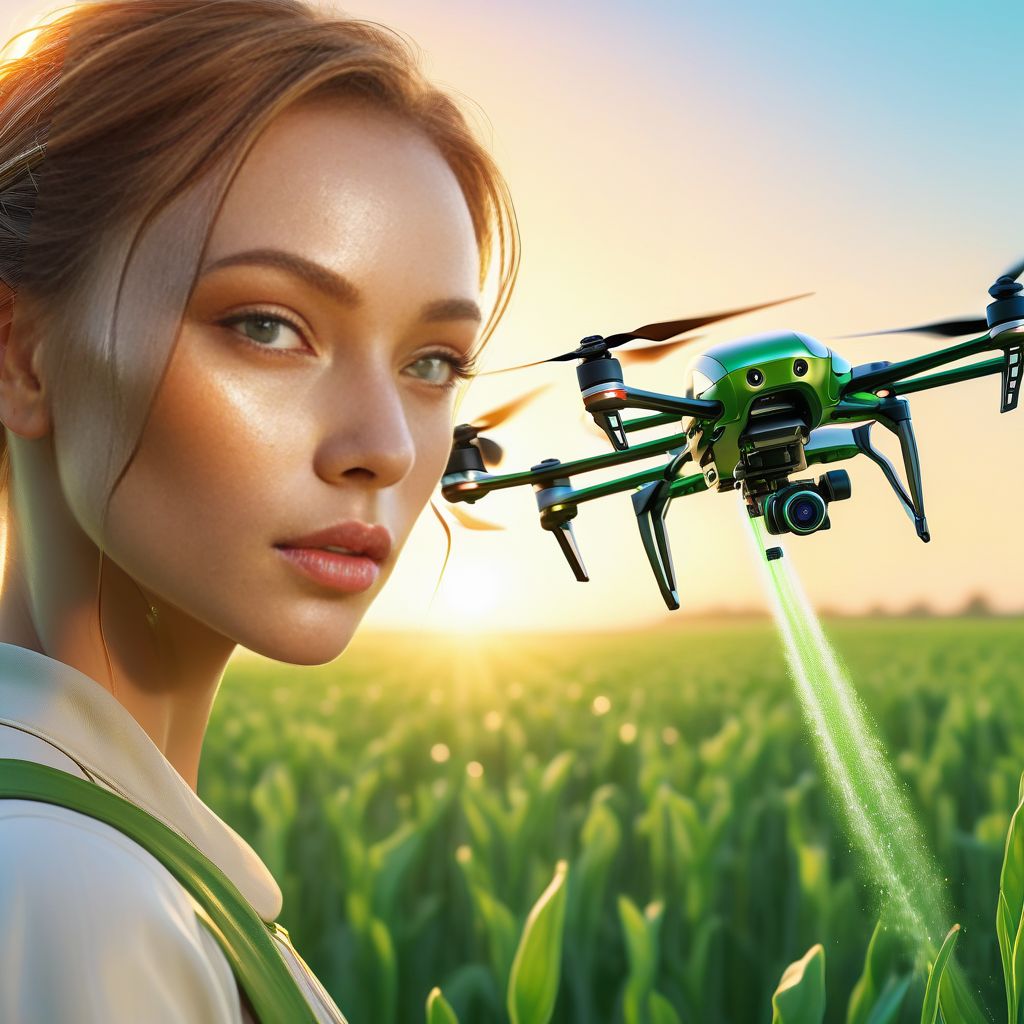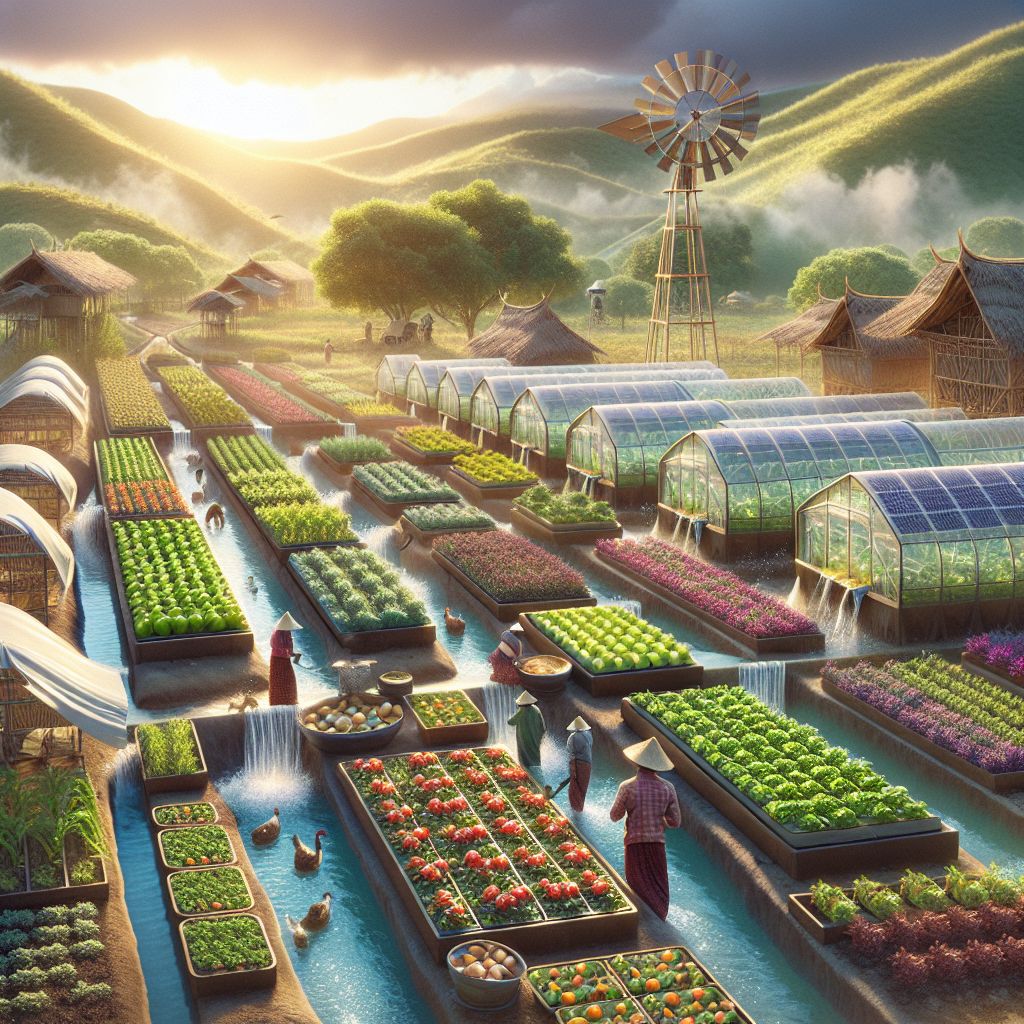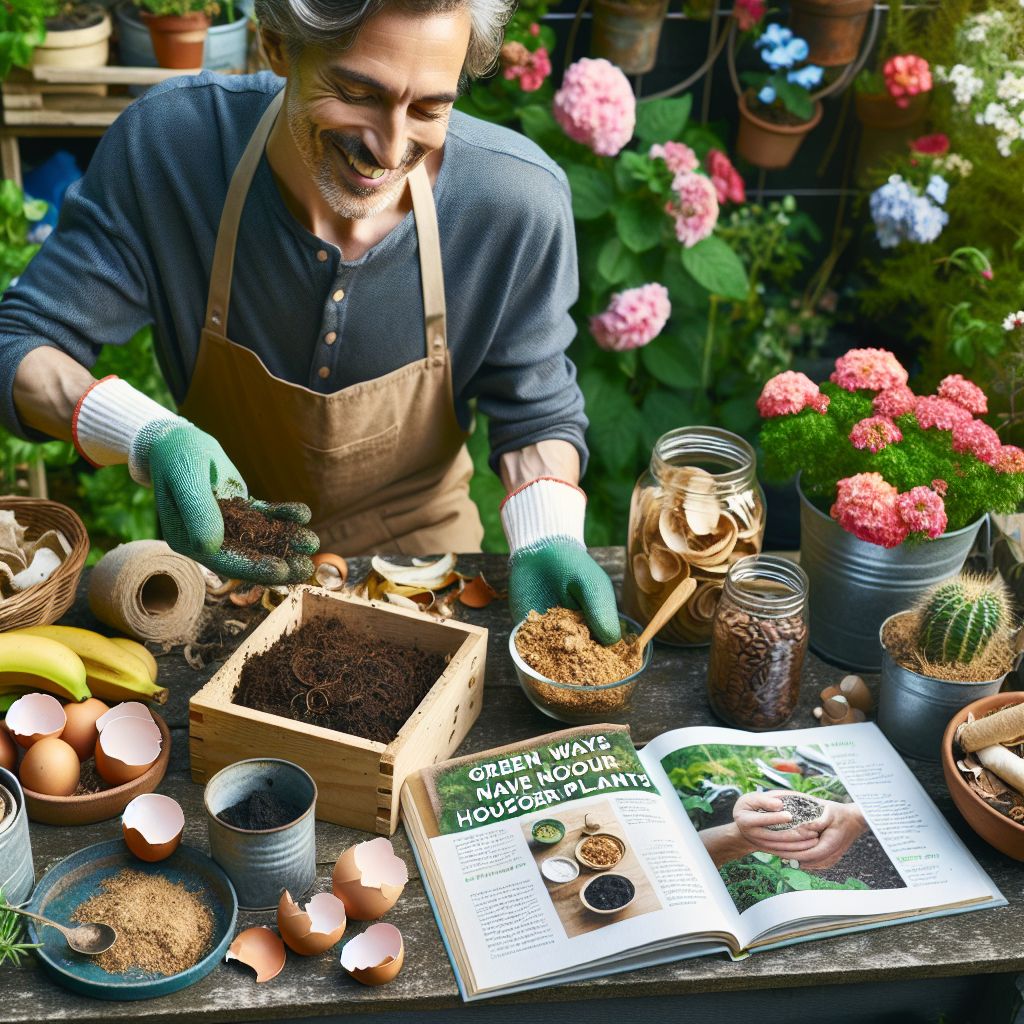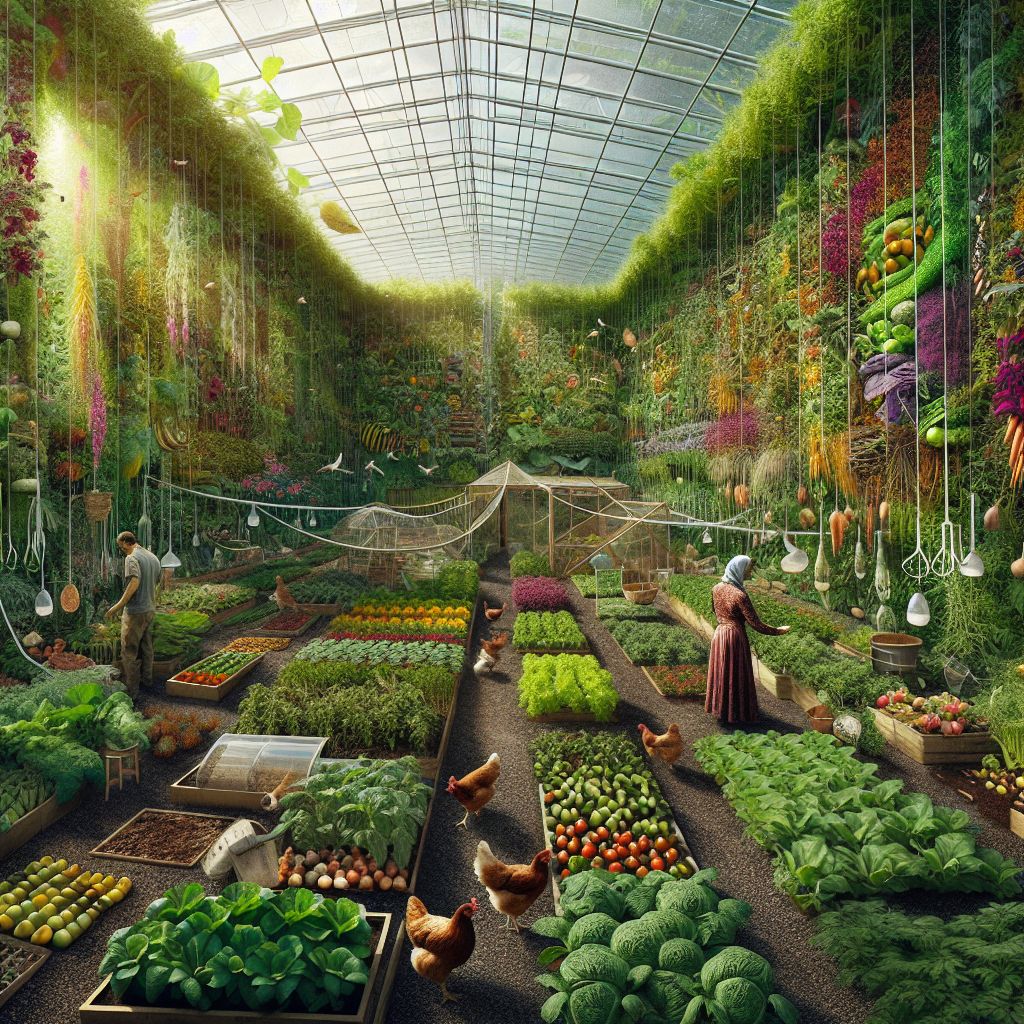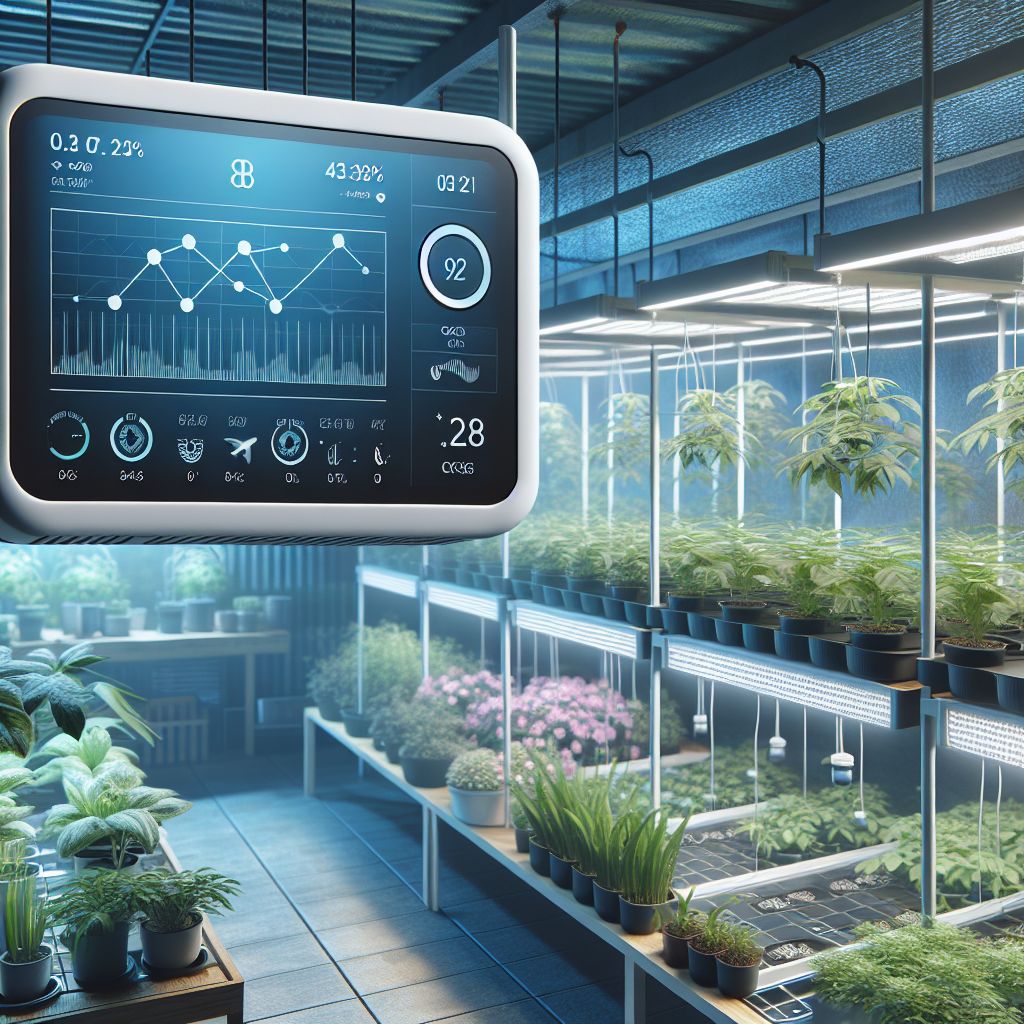Key Takeaways
- UK Innovative Farming Techniques are reshaping agriculture with vertical farming and hydroponics through saving space use and water conservation.
- Precision agriculture leverages technology to optimize field-level management for crop farming.
- Aeroponics is an innovative method that allows plants to grow in an air or mist environment without soil.
- Smart greenhouses are enhancing traditional farming methods with data-driven climate control and resource management.
- LED lighting in controlled agriculture settings is revolutionizing plant growth with energy efficiency and tailored light spectra.
Revolutionizing the Field: UK’s Leap into Sustainable Agriculture
Imagine stepping into a farm where technology and nature intertwine to create a symphony of sustainable growth. This isn’t a glimpse into the distant future, it’s happening right now in the UK. Farmers and innovators are joining forces to develop strategies that not only boost productivity but also protect our precious environment.
Key Benefits of Innovative Farming Strategies
When we talk about innovative farming strategies, we’re looking at a win-win scenario. These approaches are not just good for the planet, they’re great for farmers too. Here’s why:
- They use resources like water and space more efficiently, which means more produce per square foot.
- They reduce the need for pesticides and herbicides, leading to healthier, organic produce.
- They enable farming in areas with poor soil or harsh climates, opening up new opportunities.
But how exactly do these strategies work? Let’s dive in and explore some of the cutting-edge techniques that are setting the UK apart in the world of agriculture.
Innovative Farming Techniques Transforming UK Agriculture
Across the UK, farmers are rolling up their sleeves and getting down to the business of innovation. With a focus on controlled environment agriculture (CEA), they’re taking the guesswork out of farming and setting new standards for efficiency and sustainability.
Vertical Farming: Scaling Agricultural Heights
Vertical farming is a game-changer. By growing crops in stacked layers, often within buildings, warehouses or even underground, this method turns the traditional farming model on its head—quite literally. Here’s what makes vertical farming stand out.
- It’s incredibly space-efficient, making it perfect for urban areas where land is scarce.
- It allows for year-round farming, unaffected by the whims of weather.
- It often incorporates hydroponics, which means plants get their nutrients from water, not soil, saving a vast amount of water in the process.
Most importantly, vertical farming can significantly increase yield while reducing the farm’s footprint. Just think about it, a single acre of vertical farm can produce what would normally take ten to twenty traditional soil-based acres. That’s not just impressive, it’s revolutionary.
Hydroponics and Aquaponics: Water-Wise Farming
Now, let’s talk about hydroponics. This method involves growing plants in a nutrient-rich water solution, skipping the soil entirely. But why is this such a big deal? Well, hydroponics slashes water usage by up to 90% compared to traditional farming. And there’s more:
- Plants grow faster because they get exactly what they need, directly to their roots.
- There’s no soil erosion or degradation to worry about.
- Hydroponic systems can be set up almost anywhere, including indoors, rooftops, and deserts.
Aquaponics takes it a step further by combining fish farming with hydroponics. The fish waste provides organic nutrients for the plants, and the plants clean the water for the fish. It’s a closed-loop system that’s a model of efficiency and sustainability.

Precision Agriculture: Technology-Driven Crop Management
Imagine being able to monitor and nurture each plant individually. That’s the heart of precision agriculture—using data and technology to make farming more accurate and controlled. Drones, sensors, and GPS technology all come into play, allowing farmers to:
- Assess crop health from above with drones.
- Apply water, fertilizers, and pesticides with pinpoint accuracy, reducing waste and environmental impact.
- Analyze data to make informed decisions about planting, harvesting, and managing resources.
Therefore, precision agriculture isn’t just about being precise, it’s about being smart and making the most of every resource at our disposal.
For example, a farmer in Norfolk has used precision farming techniques to increase his potato yield by 15% while reducing his chemical use by 25%. That’s the kind of smart farming that can make a real difference.
Let’s pause here and let these ideas take root. We’ve started to explore how the UK is at the forefront of sustainable agriculture, and there’s still more to uncover. In the next sections, we’ll delve into aeroponics, smart greenhouses, and the success stories that are inspiring a new generation of eco-conscious growers.
Mastering Controlled Environment Agriculture (CEA)
Controlled Environment Agriculture (CEA) is like the conductor of an orchestra, bringing together various elements of farming to create a harmonious and optimized growing condition. It’s all about control – over temperature, humidity, light, and nutrients. By mastering CEA, farmers can produce high yields of premium quality produce all year round, regardless of external weather conditions.
Smart Greenhouses: A Bright Solution
Smart greenhouses are the cornerstone of CEA. They combine the best of traditional farming with the latest technology. Imagine a greenhouse that can adjust its own climate based on the needs of the plants inside. Sensors monitor everything from temperature to soil moisture, and automated systems adjust the environment to keep conditions just right.
And it’s not just about keeping plants warm. Smart greenhouses can cool down too, which is essential in the UK’s increasingly unpredictable climate. By providing a consistent environment, these greenhouses help farmers avoid the risks of frost, heatwaves, and pests.

LED Lighting: Powering Plant Growth Efficiently
LED lighting has revolutionized the way we grow food in CEA settings. These lights are energy-efficient, long-lasting, and can be tuned to specific wavelengths that plants need to grow. By using LED lights, farmers can:
- Extend the growing day or even provide 24-hour light, speeding up plant growth.
- Save on energy costs compared to traditional lighting methods.
- Reduce heat stress on plants, as LEDs emit very little heat.
It’s not just about saving money or energy, though. LED lighting can improve plant quality by encouraging better photosynthesis and plant morphology. That means tastier fruits and vegetables, with more nutritional value.
Automated Monitoring Systems: Keeping a Finger on the Pulse
Automation is the secret ingredient that makes CEA so effective. Automated monitoring systems track everything that’s happening in the growing environment. They measure the levels of nutrients in the water, the pH of the soil, the humidity in the air, and much more.
Because of these systems, the plants get exactly what they need, when they need it. This precision reduces waste and ensures that no resources are used unnecessarily. The result? Happier plants and a happier planet.
Success Stories: UK Farmers Leading the Way
The proof is in the pudding, or in this case, the produce. UK farmers are not just talking the talk, they’re walking the walk when it comes to sustainable farming practices. Let’s look at some of the eco-heroes who are making a real difference.
Eco-hero Farmers: Sustainable Practices in Action
Take, for example, a farm in Cornwall that’s using a combination of vertical farming and aquaponics to create a closed-loop system. They’re not only saving water and space but also producing some of the freshest, most sustainable fish and vegetables in the region.
Another farm in Wales has turned their traditional greenhouse into a smart greenhouse. They’re using automated systems to control the climate and have reduced their water usage by 30% while increasing their crop yield by 20%.
Community Impact: How Local Farmers are Making a Global Difference
These local heroes are contributing to a global movement. By adopting sustainable practices, they’re reducing their carbon footprint and helping to combat climate change. Moreover, they’re providing their communities with fresh, local produce, reducing the need for long-distance food transportation.
It’s not just about the environment or the economy, it’s about building a healthier society. These farmers are showing us that sustainable farming is not just possible, it’s profitable and preferable.
Strategies to Implement in Your Farm Today
If you’re inspired to start making changes on your farm, there are practical steps you can take today. Let’s go over some strategies that you can implement to join the ranks of eco-conscious growers.
Steps to Transition to Hydroponics
Moving to hydroponics can seem daunting, but it’s a lot simpler than you might think. Here’s how to get started:
- Begin with a small, manageable system to learn the ropes.
- Choose leafy greens or herbs as they are some of the easiest crops to grow hydroponically.
- Invest in a quality water pump, air stone, and nutrient solution to ensure your plants get what they need.
Remember, the key to success with hydroponics is monitoring and adjusting. Keep an eye on your plants and the water conditions, and you’ll see just how rewarding this soil-less farming method can be.
Tools for Adopting Precision Agriculture
Precision agriculture might sound high-tech, but it’s becoming more accessible every day. Here are some tools that can help you adopt this approach:
- Drones equipped with cameras for monitoring crop health from above.
- Soil sensors to measure moisture and nutrient levels, giving you real-time feedback.
- Data management software to analyze and make sense of all the information you’re collecting.
With these tools, you can make informed decisions that lead to healthier crops and a healthier environment.
Choosing the Right Crops for Vertical Farming
Not all crops are suitable for vertical farming, but many are. Here’s what you should consider when selecting crops:
- Opt for high-value, fast-growing crops like lettuce, spinach, and herbs.
- Think about the local market and what kinds of produce are in demand.
- Choose varieties that are known to perform well in a controlled environment.
Vertical farming is about maximizing output in a limited space, so choosing the right crops is crucial to your success.
The Road Ahead: Future Trends in Agri-Tech
As we look to the future, the potential for innovation in sustainable farming is boundless. With the UK’s commitment to reducing carbon emissions and the global demand for sustainable produce, agri-tech is set to play a pivotal role in the agriculture industry. Here are some emerging trends to keep an eye on:
Emerging Technologies in Sustainable Farming
From artificial intelligence to blockchain, emerging technologies are poised to take UK farming to the next level. AI can process vast amounts of data to make precise recommendations for planting and harvesting, while blockchain technology offers a transparent way to track food from farm to table, ensuring quality and safety.
Additionally, gene editing and biotech are opening up new possibilities for crop resilience and nutrition. These technologies could enable us to grow food in previously inhospitable environments, and create plants that are more resistant to pests and diseases.
Policy and Funding: Shaping the Future of Farming
Government policies and funding are crucial in supporting the transition to innovative farming practices. In the UK, grants and subsidies are available for farmers who are looking to invest in technology that reduces their environmental impact. Policies are also being crafted to encourage research and development in the agri-tech sector, ensuring that the UK remains at the forefront of sustainable farming.
FAQ`s on UK Innovative Farming Techniques
What Makes a Farming Technique Sustainable?
A farming technique is sustainable if it meets the needs of the present without compromising the ability of future generations to meet their own needs. This includes using resources at a rate at which they can be replenished, minimizing waste and pollution, and promoting the health of ecosystems.
How Can Controlled Environment Agriculture Increase Yield?
Controlled Environment Agriculture can increase yield by creating the perfect growing conditions for plants year-round. By controlling factors such as light, temperature, and humidity, CEA can produce higher yields and faster growth rates than traditional farming methods.
Can Small Farms Afford Innovative Technologies?
While innovative technologies can be costly, there are ways for small farms to adopt them. Grants, subsidies, and shared technology programs can help offset the costs. Additionally, starting small and scaling up as benefits are realized can make the transition more affordable.
What are the First Steps Toward Eco-Conscious Farming?
The first steps toward eco-conscious farming involve assessing your current practices and identifying areas for improvement. This might mean introducing crop rotation, reducing chemical use, or starting a small hydroponic system. Education and connecting with other sustainable farmers for advice and support are also key.
For instance, a community of farmers in Devon collaborated to create a shared resource for a hydroponic system, significantly reducing individual costs and allowing them to benefit from collective knowledge and experience.
Where Can UK Farmers Find Resources for Agri-Tech Training?
UK farmers looking for resources on agri-tech training have several options:
- Local agricultural colleges and universities often offer courses and workshops.
- Organizations such as Agri-TechE provide networking opportunities and events focused on the latest developments in agriculture technology.
- Government programs and online platforms offer grants and educational resources specifically tailored to sustainable farming practices.
In conclusion, UK agriculture is on the cusp of a green revolution, with controlled agriculture strategies and innovative farming techniques leading the charge. The future is bright for those willing to embrace change and invest in sustainable growth. By taking inspiration from successful models and utilizing the wealth of resources available, farmers across the UK can contribute to a healthier planet and a more resilient food system.

